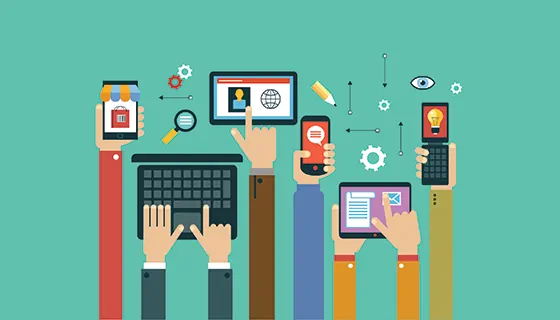Your Genesys Blog Subscription has been confirmed!
Please add genesys@email.genesys.com to your safe sender list to ensure you receive the weekly blog notifications.
Subscribe to our free newsletter and get blog updates in your inbox
Don't Show This Again.

Do you know your multi-channel from your multimodal from your omnichannel? In this series, we’ll explain the differences between these terms from a Genesys perspective. We began in part 1 of the series with a look at the definition and limitations of multi-channel customer engagement, but some of those issues can be resolved by taking things further with a multimodal approach…
While a multi-channel customer experience merely creates the possibility of engaging with customers over more than one channel—allowing, for instance, a Time Warner Cable customer to contact tech support by either phone or email, instead of only phone—a multimodal experience makes use of multiple channels, together, during a single interaction. Also known as cross-channel, multimodal CX is a way to begin to connect and integrate channels—voice, text, email, chat, social media, online FAQs, and more.
Imagine a customer speaking on the phone with a support agent and requesting an upgrade to his existing cable TV package. Without multimodal functionality, the entire conversation might take place only over the phone, with no follow-up on another channel—unless, of course, the customer later live-chats via the company website with another agent to complain that his new cable package isn’t working. If a support agent has access to software that facilitates multimodal conversations, however, they might send the customer an email confirming the details of the order while still on the initial call, and perhaps that email includes a link to a support site that can help the customer resolve additional issues on his own.
Thus, three CX channels—phone, email, and online FAQs—are tied together simultaneously, giving the customer more options, more clarity, and more ways to continue the engagement on the channel of their choice.
Some new mobile apps take advantage of multimodal interactions by allowing a customer to speak with an agent on a smartphone while also browsing information on an app, discussing their issue with the agent, and then perhaps following a hyperlink that the agent sends via text message to the same phone on which the customer is speaking and browsing—a multimodal interaction facilitated by one device.
A multimodal customer engagement takes CX a step beyond the disjointed array that often characterizes multi-channel, tying diverse channel modes together and thereby increasing the odds of delivering a better customer experience. Integrating multiple channels into single interactions is also the first step for organizations to take on the path to delivering a smooth, integrated, and proactively managed customer journey.
Additionally, multimodal approaches to customer service can lead to more comprehensive measurements of success. Some very common metrics, such as time-to-resolution (TTR) or average handle time (AHT), have been used for years to track call times in your company’s call center, but they don’t necessarily indicate the success of a single customer engagement that spans multiple channels at once in a modern digital contact center. However, new implementations of those metrics that span multiple channels, along with more customer-centric performance metrics like Net Promoter Score (NPS), may be able to better track the results of multimodal CX.
While we’ll explore the nature of omnichannel in detail in our next installment, the basic distinction between multimodal and omnichannel CX is that a multimodal interaction is typically a single engagement on a single issue with a customer that spans multiple channels until that single issue is resolved; whereas an omnichannel engagement utilizes a meta-view of all channel engagements, seeing the entire history of a customer’s interactions with a company and leveraging a clear overview of that customer journey to facilitate better, smoother multimodal interactions in real time.
In other words, omnichannel CX transcends and includes all of the interactions across every channel, helping to turn any given multimodal customer experience into just another smooth, seamless step in a long-term customer journey.
Subscribe to our free newsletter and get blog updates in your inbox.